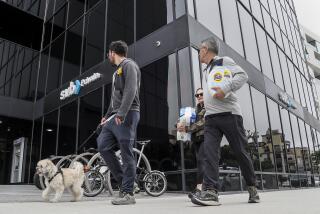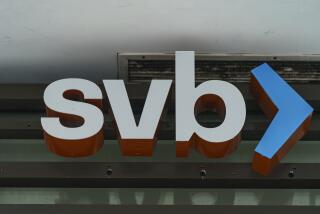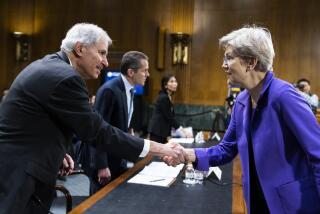Senate Panel Fears Tough Rules in Bush’s Rescue Plan Would Destroy Many S
- Share via
WASHINGTON — Senate Banking Committee members, greeting President Bush’s savings and loan rescue plan with skepticism, expressed fears Wednesday that proposed tough financial standards could drive several hundred S&Ls; out of business within the next two years.
“We do not want to make (the rules) so onerous that we create dead bodies out of reasonably healthy bodies,” said Sen. Christopher S. Bond (R-Mo.).
Treasury Secretary Nicholas F. Brady told the committee that only 1,200 of the nation’s 2,500 solvent S&Ls; have capital reserves equal to 6% of their assets, the standard that the Bush plan would require of all thrift institutions in 1991.
There will be “pain,” Brady conceded, as the remaining institutions struggle to raise the necessary funds. Capital reserves equal the sum of retained profits and funds contributed by owners and investors.
Sen. Phil Gramm (R-Tex) called the proposed 6% capital requirement “unrealistic. It’s possible in heaven; whether it’s possible in Texas is debatable.”
Bond suggested that S&Ls; be given several more years to meet the strict standard if they show progress in moving steadily toward the 6% level. “We should not perform triage and put (S&Ls;) in the dead category,” he said.
A Democratic colleague, Sen. Terry Sanford of North Carolina, told Bond: “If Missouri and North Carolina work together, we may get a little amendment in there.”
However, Brady insisted on the need for tough capital rules to shore up the surviving thrift institutions and avoid a future scandal in which weak institutions must again be bailed out with the help of taxpayers’ funds. “If this happens again, we ought to be shot,” he said.
The financial collapse of S&Ls; has wrecked the federal insurance fund that guarantees S&L; deposits up to $100,000. Hundreds of insolvent institutions remain open because the insurance fund does not have enough cash to close them and pay off their depositors. The Bush rescue plan provides a complex financing scheme to raise the money needed to shut the crippled S&Ls; or provide financial incentives to attract buyers.
When Senate Banking Committee members expressed concerns about the 1,300 institutions that are solvent now but may not be able to meet the 6% standard, Brady said they could seek to merge with stronger S&Ls; or simply go out of business.
That clearly did not satisfy Committee Chairman Donald W. Riegle Jr. (D-Mich.). “We need a better dollar estimate” of the potential cost of closing institutions that cannot meet a 6% standard, Riegle told Brady.
Brady said the Administration plan had a cushion of $10 billion for closing institutions that do not now appear to need rescue. However, he was unable to provide an estimate of the number of S&Ls; that might be driven out of business by the 6% standard.
Wants Different Standards
S&Ls; currently able to qualify at a 6% capital level have $319 billion in assets, only 24% of the industry’s total.
Meanwhile, House Banking Committee Chairman Henry B. Gonzalez (D-Tex.), issuing his own analysis of the Bush program, said S&Ls; that concentrate on making home mortgages should be rewarded with lower deposit insurance premiums and capital requirements. The Bush program calls for uniform standards for all institutions.
“The plan must promote and preserve institutions willing to devote most of their resources to housing,” according to Gonzalez’ committee analysis of the Administration proposal.
Since deregulation in the early 1980s, other S&Ls; have branched out into other, more exotic kinds of lending.
The committee also recommended that repossessed homes owned by failed S&Ls; should be made available at “affordable rates for first-time home buyers.” Widespread S&L; failures have given the government a huge portfolio of single-family homes, apartment buildings, condominiums, office buildings and shopping centers.
Gonzalez attacked as excessively “rosy” the Administration’s economic assumptions for the S&L; rescue plan. Because interest rates will be higher than the Administration admits, Gonzalez predicted, the total cost of restoring the S&L; insurance fund will be $335 billion over 30 years, with $183 billion coming from taxpayers. The Administration estimates an outlay of approximately $200 billion over 30 years, with about half paid by the taxpayers.
More to Read
Inside the business of entertainment
The Wide Shot brings you news, analysis and insights on everything from streaming wars to production — and what it all means for the future.
You may occasionally receive promotional content from the Los Angeles Times.










